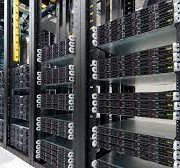As businesses increasingly rely on technology to drive their operations, the question of whether to invest in on-premises servers or embrace cloud-based solutions has become a critical consideration. Both options offer unique advantages and challenges, making the decision a complex one. In this article, we will explore the differences between on-premises and cloud-based servers, the benefits and drawbacks of each approach, and key factors to consider when making this crucial decision.
Understanding On-Premises Servers
On-premises servers refer to physical hardware that is owned, operated, and maintained within an organization’s own data center or server room. These servers are managed by the company’s IT staff and are physically located on the company’s premises.
Advantages of On-Premises Servers:
1. Control and Customization: On-premises servers provide full control over the infrastructure, allowing organizations to customize the hardware, software, and security to meet their specific needs.
2. Security: Organizations may have more confidence in the security of sensitive data when it is stored within their premises and under their direct supervision.
3. Data Sovereignty: For businesses that operate under strict data governance regulations, having data physically located on-premises may help ensure compliance with local laws.
4. Predictable Costs: On-premises solutions offer predictable costs as they are based on upfront capital expenditure rather than ongoing monthly fees.
Challenges of On-Premises Servers:
1. Upfront Investment: On-premises servers require a significant upfront investment in hardware, infrastructure, and IT staff.
2. Scalability: Scaling an on-premises infrastructure to accommodate sudden growth can be time-consuming and costly.
3. Maintenance and Upgrades: Organizations are responsible for maintaining and upgrading hardware and software, which requires dedicated IT expertise and resources.
Understanding Cloud-based Servers
Cloud-based servers, also known as virtual servers or cloud servers, are provided by third-party cloud service providers. These servers run in a virtualized environment and are accessed over the internet.
Advantages of Cloud-based Servers:
1. Scalability and Flexibility: Cloud-based solutions allow organizations to scale their resources up or down quickly based on fluctuating demands, offering unparalleled flexibility.
2. Cost-Effectiveness: Cloud servers operate on a pay-as-you-go model, reducing upfront costs. Businesses only pay for the resources they use, making it cost-effective for startups and small businesses.
3. Managed Services: Cloud providers often offer managed services, taking care of server maintenance, security, and updates, freeing up internal IT resources.
4. Global Accessibility: Cloud-based servers enable seamless access to data and applications from anywhere with an internet connection.
Challenges of Cloud-based Servers:
1. Data Security Concerns: Some organizations may have reservations about storing sensitive data on third-party servers, even if cloud providers implement robust security measures.
2. Internet Dependency: Cloud-based solutions rely on internet connectivity, which can become a limitation in areas with limited or unreliable internet access.
3. Potential Vendor Lock-in: Migrating from one cloud provider to another can be complex and costly, leading to potential vendor lock-in.
Factors to Consider When Choosing Between On-Premises and Cloud-based Servers
1. Budget and Cost Structure: Consider your budget and the financial implications of both options, including upfront costs, ongoing operational expenses, and long-term scalability.
2. Workload and Performance Requirements: Assess the specific needs of your applications and workloads. High-performance applications may benefit from on-premises solutions, while cloud-based servers offer scalability for rapidly growing businesses.
3. Data Security and Compliance: Evaluate your data security and compliance requirements. Some industries may prefer the control and data sovereignty of on-premises servers, while others may trust reputable cloud providers’ security measures.
4. Flexibility and Scalability: Consider the flexibility needed for your business. Cloud-based servers are ideal for businesses with dynamic resource demands, while on-premises servers offer complete customization.
5. IT Expertise and Resources: Determine your organization’s IT capabilities and whether you have the resources to manage and maintain on-premises servers effectively.
6. Geographic Reach: If your business requires global accessibility, cloud-based solutions can offer better accessibility to remote teams and international customers.
Conclusion
Deciding between on-premises and cloud-based servers is a critical choice that significantly impacts your organization’s IT infrastructure, cost structure, and scalability. Both options have distinct advantages and challenges, making it essential to carefully evaluate your specific needs, budget, security requirements, and long-term growth projections. Hybrid solutions are also an option, allowing businesses to leverage the benefits of both on-premises and cloud-based environments. By conducting a thorough analysis and considering the factors mentioned in this article, you can make an informed decision that aligns perfectly with your business objectives and sets the stage for a scalable, reliable, and future-ready IT infrastructure.






















Comments